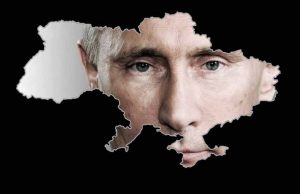There has been much consternation in America and Europe for the past decade since Russia began practicing hybrid warfare. Ostensibly initiated by Russian General Valery Gerasimov with PM Putin’s support, hybrid warfare has resulted in Russian taking Crimea without a shot being fired, occupying Donetsk in eastern Ukraine, keeping Syrian President Assad in power, and potentially influencing the outcome of an American election, like reported by e-ir.info.
The aggressive and successfully moves in Ukraine have so alarmed some European nations that they are considering withdrawing from the 1997 Mine Ban Treaty which attempts to outlaw the production and use of landmines. Both Ukraine and Finland have threatened to pull out of the Ottawa Landmine Ban treaty because of perceived Russian aggression. Russia, helped spur on such a perception with a very public military exercise that contained a practice invasion of Norway and other northern European states.
With so much success and so much cowering in western states, it is no wonder that much of the scholarship on Russian hybrid warfare has asserted the near infallibility of the Russian approach. While most western nations see Russian hybrid warfare as threat to the western democratic way of life, it is, ironically, more threatening to the continued existence of Russia as viable nation-state.
There is no doubt that Russia needed Crimea as its only warm water port for naval operations. The maneuvering short of war, including the introduction of Russian armed forces who did not wear an identifiable Russian uniform, can be categorized as nothing short of a stunning success.
But the occupation of the Donetsk region of Ukraine has turned into something far less strategically sound. While Putin received an enormous boost in domestic polls after taking eastern Ukraine, it now appears that he cannot pull out. Donetsk is not a very viable economic region so it is draining Russian monetary and military resources.
The United States placed the 45th Infantry Brigade from the Oklahoma National Guard in Ukraine to train forces there. While adept militarily, this lone brigade could not stand up to the twenty to thirty thousand Russian forces arrayed just across the border in western Russia. It is likely that the US brigade is placed there more as a deterrence force rather than a force sent to fight the Russian military. But there may be more than a deterrence role for the 45th Infantry Brigade.
The brigade could also be serving a role fixing the Russian forces causing Putin to commit a lot of resources, military and economic, to a fight that no longer has a compelling strategic or political purpose. This argument takes on a lot more force when one considers where else Russian forces are committed or soon to be committed.
In order to prop up Assad in Syria and maintain access to another warm water port, Russia has committed a number of troops to a counterinsurgency campaign that shows no signs of resolution. Russia has committed thousands of troops and numerous air force assets, anti-aircraft guns, tanks, and attack helicopters to the fight. The Syrian excursion is costing a wobbling Russian economic system hundreds of millions of dollars and it is now leading to Russian casualties. Russia is also militarily committed to the Arctic and has had to commit a significant number of soldiers and tanks to the North Korean border as Kim Jong Un continues to cause fear in the region.
All of this movement of troops to the various borders of Russia and outside Russia in Donetsk and Syria has created space for ISIS to infiltrate Chechnya and help spark renewed resistance to Russian rule in the region. Russian soldiers are already again losing their lives in Chechnya. However, some recent attacks have been perpetrated by ISIS operatives. Chechnya may be one of the perfect places for ISIS to operate and metastasize as hybrid war has resulted in a Russian military that is stretched thin. Russia can ill-afford a reinvigorated, ISIS supported, third war in Chechnya.
All of this is occurring against a grim economic backdrop. Russian first quarter GDP growth was a meager .5%. Russian inflation has fluctuated wildly between about 5% and 15% since 2008. Even with some growth this year, Russia remains dependent on oil and natural gas revenues and, therefore, the Russian economy is fragile to price fluctuations. This is not an economy that can afford the multi-year commitments and a potential third war with Chechnya that hybrid warfare has wrought.
When one looks at hybrid warfare and the Gerasimov doctrine from a Russian point of view, the threat to the west is likely played out. The threat to continued stability of Russia is not. Russia is a fragile mosaic of disparate cultures and peoples resting on a shaky economic foundation. Hybrid warfare was a long-term strategic miscalculation on the part of the Russians and Putin and his successors will likely regret the expenditures that this strategy, once perceived as frightening genius in the west, has produced.



